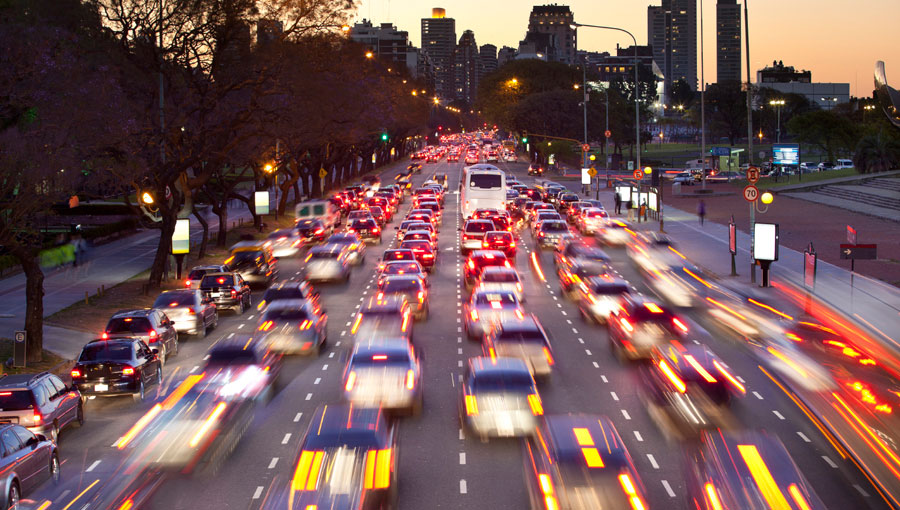Driver assistance systems for greater safety and efficiency
Vehicles to assist city drivers

Chaos at major intersections, confusing traffic lanes, pedestrians suddenly dodging the traffic: City drivers have to process a lot of information, make many split-second decisions and deal with constant distractions. Up to now though, driver assistance and traffic management technologies have mainly been designed for journeys on expressways and highways. But in a new project called UR:BAN (“Urban Space: User oriented assistance systems and network management”) thirty German research institutes, companies and city authorities are developing systems for safe, efficient and stress-free city driving.
Assistance starts with advice on the best route to take. Unlike current navigational aids, the new technology will also take the vehicle’s drivetrain into consideration, which means it will also be factoring in fuel consumption. Once the driver is underway, the assistance system is designed to keep vehicles on a “green run” through intersections. This is particularly important for trucks since they are slower to take off when the lights change. Traffic engineers from TUM are therefore working on more advanced traffic light switching sequences. When the driver approaches intersections, changes lanes or passes narrow sites, the assistance system will advise on the best course of action. If there is a risk of collision, the vehicle can automatically brake or swerve.
In practice though, how can these technologies be designed so that they actually help the driver, rather than add to the distractions? What advice is really important? And how should it be presented to the driver? “At first glance, many systems look easy to use. But that does not necessarily mean that drivers will be able to manage them in complex situations,” says Prof. Klaus Bengler of the Institute of Ergonomics, who is heading up the UR:BAN project “The Human Element in Traffic”. His research team is therefore exploring a variety of options, including acoustic and visual signals and pedal vibrations.
And that is not all they are focusing on. The researchers want to design “intelligent” vehicles capable of predicting driver behavior. Assistance systems could then help drivers anticipate problems and avoid collisions and other hazardous situations. “For example, if the system detects that the driver’s speed is too high to respect an upcoming right of way, it can alert the driver in good time,” explains Bengler.
The researchers have to analyze the behavior of all kinds of road users to develop these new technologies. They are pioneering a new system that combines simulators for automobiles, trucks and pedestrians. “Up to now, no-one has successfully combined three test subjects in one driving simulation,” emphasizes Prof. Fritz Busch of the Chair of Traffic Engineering and Control. “Our hope is to gain a better understanding of how road users impact each other in various situations and how the new assistance systems will affect individual drivers and city traffic as a whole.”
The UR:BAN project will be officially presented in Berlin today by Anne Ruth Herkes, Secretary of State at the Federal Ministry of Economics and Technology (BMWi). The Federal Government’s third transport research program is funding the UR:BAN project to the tune of around 40 million euros between now and 2016. The participants hope to unveil their initial results in the spring of 2014. The subsequent field tests will be carried out in Düsseldorf and Kassel.
Further information:
http://www.urban-online.org/index_en.html
Contacts:
Prof. Klaus Bengler
Technische Universität München
Institute of Ergonomics
Phone: +49 89 289 15366
E-mail: bengler@tum.de
Prof. Fritz Busch
Technische Universität München
Chair of Traffic Engineering and Control
Phone: +49 89 289 22438
E-mail: fritz.busch@tum.de